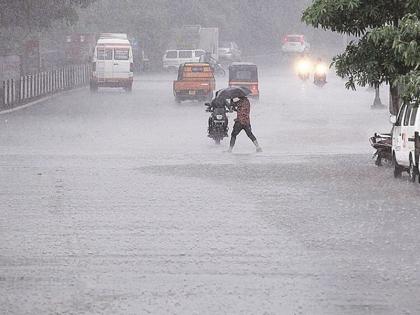What Are El Nino and La Nina? All You Need To Know About
By Lokmat English Desk | Published: April 11, 2024 03:25 PM2024-04-11T15:25:02+5:302024-04-11T15:25:58+5:30
Zimbabwe's President, Emmerson Mnangagwa, announced a "State of Drought Disaster" on April 4, citing the "severe food situation attributed ...

What Are El Nino and La Nina? All You Need To Know About
Zimbabwe's President, Emmerson Mnangagwa, announced a "State of Drought Disaster" on April 4, citing the "severe food situation attributed to the El Nino effect." This declaration follows similar actions taken by Zambia and Malawi as they grapple with the ongoing devastation of crops across southern Africa due to the El Nino-driven drought. Scientists note that this El Nino cycle began around June, peaked in December, and is now gradually subsiding. Furthermore, the same El Nino phenomenon has resulted in extreme heat and drought in Southeast Asia. In the Philippines, for instance, record temperatures have forced schools to close.
El Nino, translating to "the little boy" in Spanish, is a weather phenomenon in the Pacific Ocean. It was associated with record global temperatures in 2023, making it the hottest year on record. In contrast, its counterpart, La Nina, referred to as "the little girl," generates weather patterns typically characterized by increased precipitation. This can result in intense storms and hurricanes. Zimbabwe's recent declaration of a state of disaster due to drought underscores the impact of these weather events.
Also Read| India Braces for Early Arrival of Monsoon Season As La Nina Set To Return
How El Nino leads to extreme weather conditions
The El Nino phase is a component of the El Nino-Southern Oscillation (ENSO), a climate pattern initiated in the Pacific Ocean. It typically occurs every two to seven years. During El Nino, the prevailing trade winds, which normally move from east to west across the Pacific, weaken and occasionally reverse. These winds typically flow along the equator, transporting warm water from South America towards Southeast Asia and Australia
However, as the winds weaken, the warmer water remains in South America instead of moving westward. This alteration disrupts the typical upwelling of cold water in the eastern Pacific, leading to increased warmth in the atmosphere. Consequently, regional rainfall intensifies, often causing flooding in countries like Bolivia in northern South America. Conversely, the absence of warm water in the western Pacific can result in drought conditions and extreme temperatures. Although predictions of a severe fire season in Australia during the peak of the El Nino cycle in the summer of 2023-24 did not materialize, the months of August through October still marked the driest period in 120 years.
La Nina enhances the formation of storms and hurricanes
La Nina, another significant phase within the ENSO cycle, exhibits the opposite effects of El Nino, with prevailing east-west winds strengthening beyond normal levels. This intensification results in warmer water accumulating in the western Pacific, leading to heightened rainfall in Australia and Southeast Asia. However, La Nina phases can also trigger drought conditions and wildfires in regions along the eastern Pacific, stretching from the southwestern United States and Mexico to South America.
Predicting impacts can be challenging
While La Nina and El Nino are natural phenomena, their effects can differ based on factors such as timing, duration, and the intricate climate dynamics influenced by human-induced global warming. Some evidence suggests that climate change has increased the frequency and intensity of ENSO events. Scientists predict that as the planet continues to warm, El Nino and La Nina cycles will likely become more severe. Warmer air can hold more moisture, leading to heightened rainfall and more extreme weather patterns.
Open in app